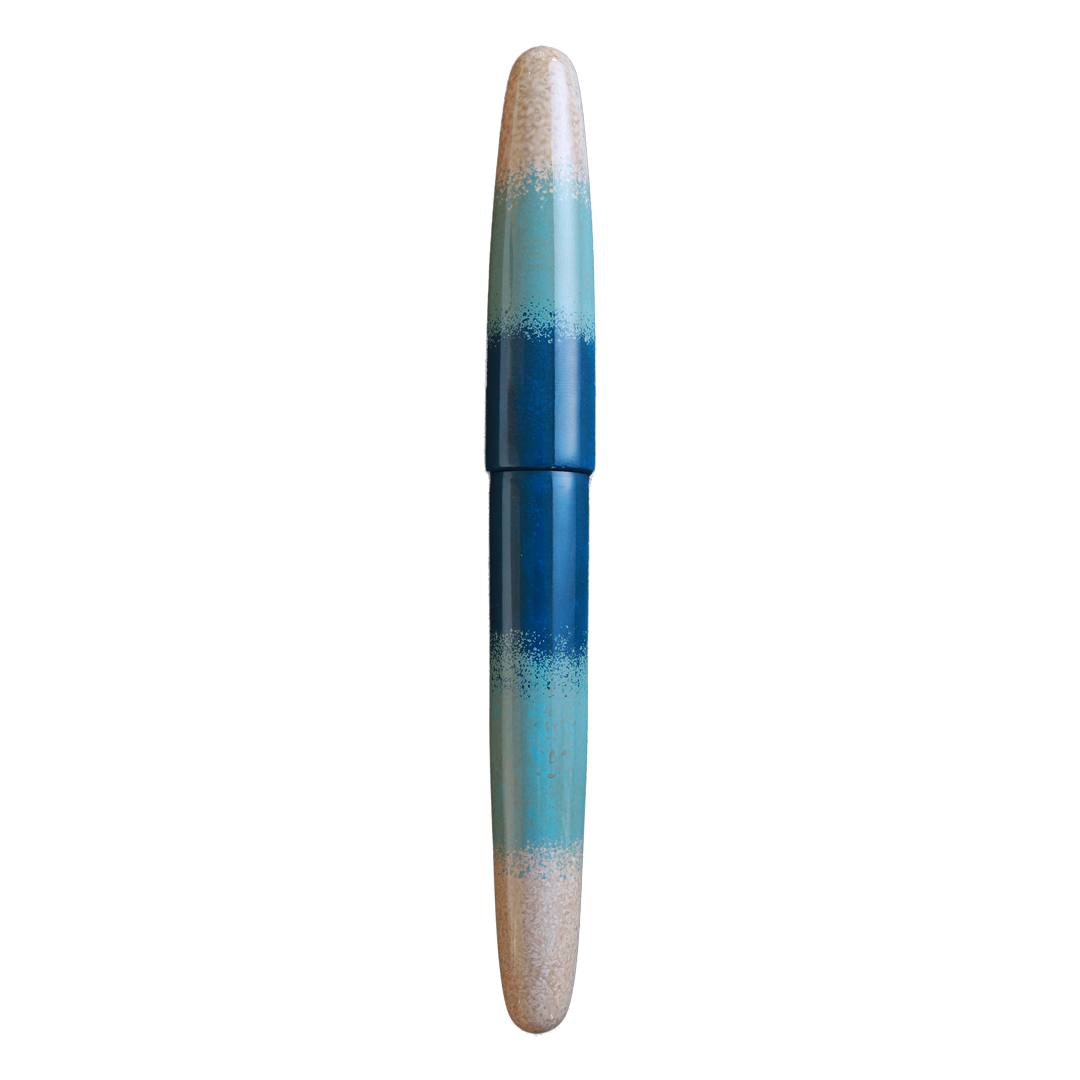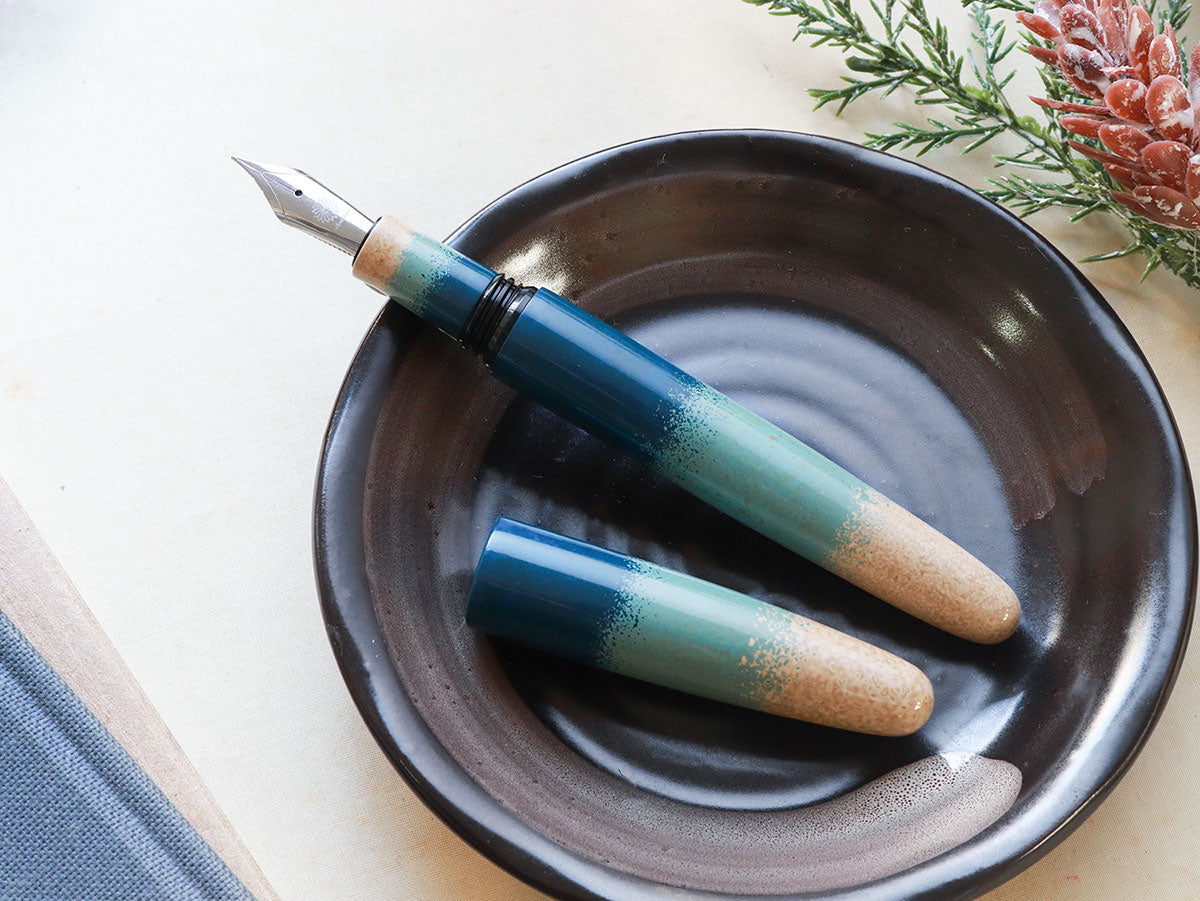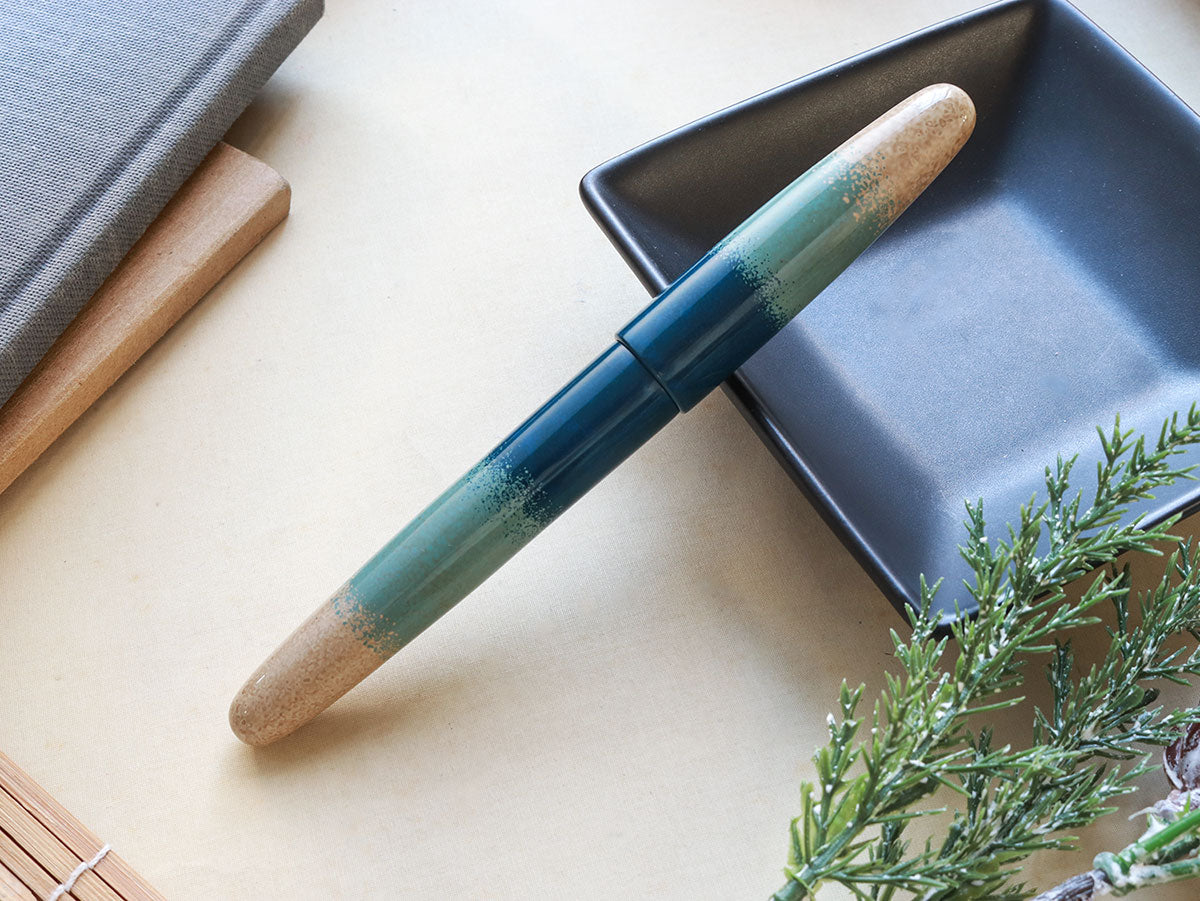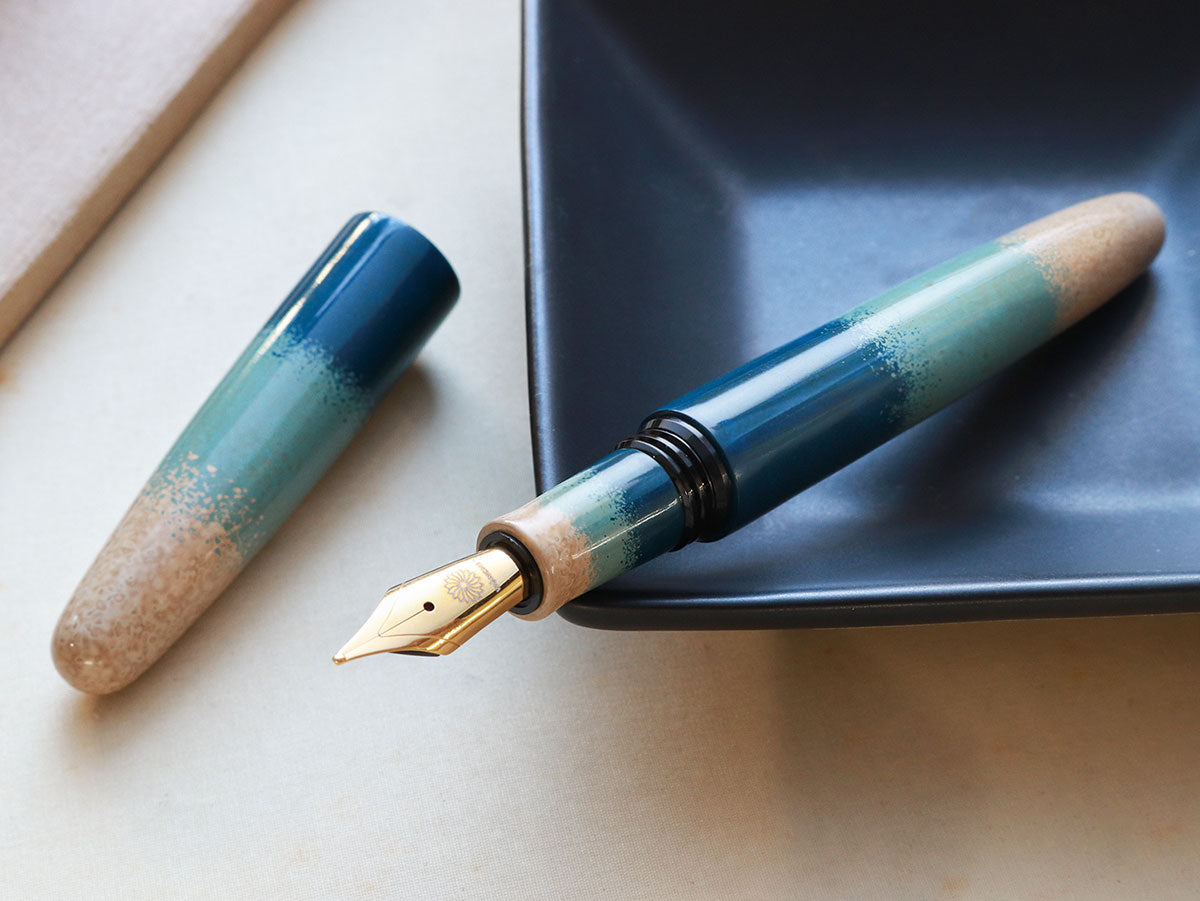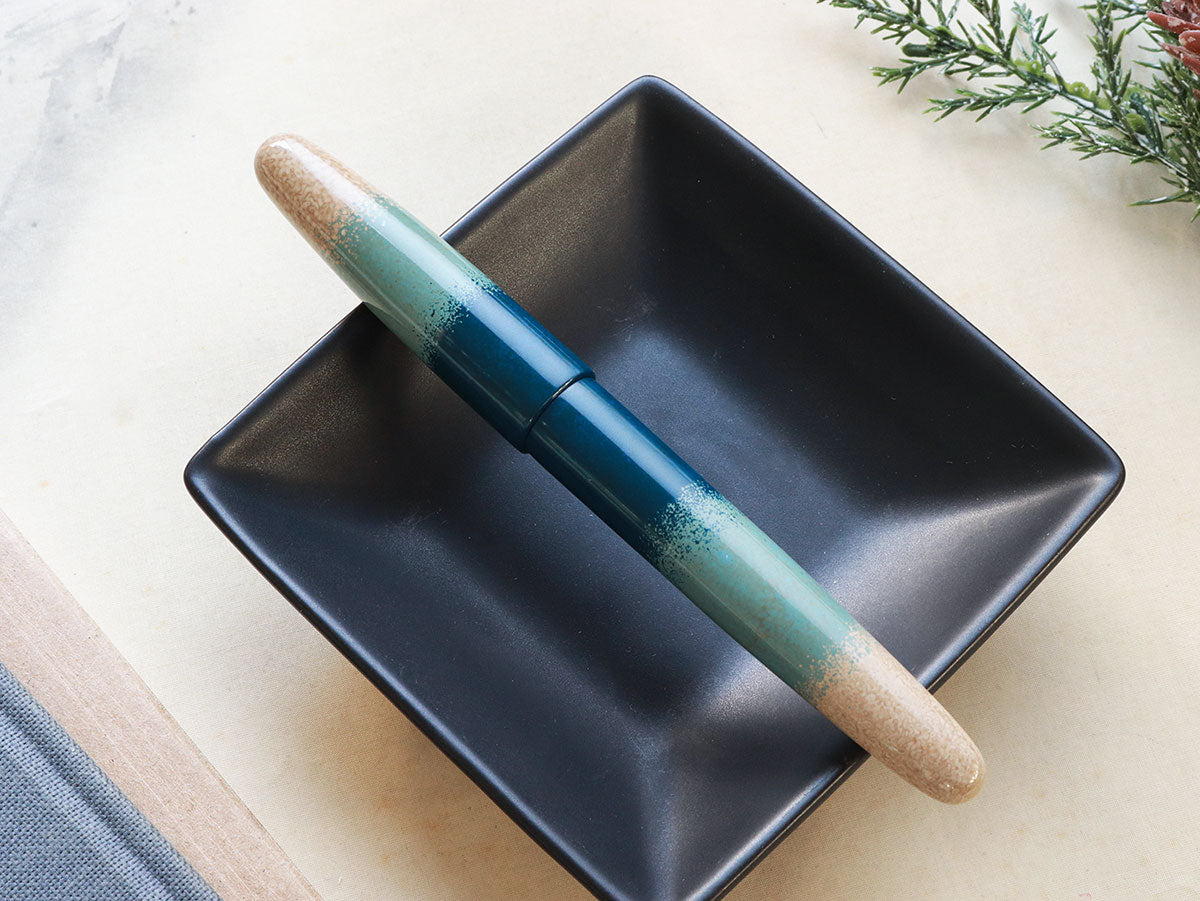Hirota Urushi - Chawan-iro - Ai
Hirota Urushi - Chawan-iro - Ai
Couldn't load pickup availability
Description
Description
Important Notice: This pen is only one piece available for each color. Since the complexity of the model will take months to craft, we cannot guarantee the same model will come back again in the future.
Chawan-iro
Expanding the range of Urushi art, Master Hirota has developed her technique of applying Urushi to something that represents Japanese kilns and pottery. "Chawan" means a bowl in Japanese. Each fountain pen in the "Chawan" series has a subtle pattern and gradation that resembles the bowls that Japanese people use in Japanese tea ceremonies, which emphasizes the humility of aesthetics.
Chawan plays a significant role in Japanese culture, especially in the Japanese Tea Ceremony. Originating from an appreciation for aesthetics, the art on the tea bowl has become an important aspect of the Japanese Tea Ceremony itself. During the ceremony, after the host serves the guests the prepared Matcha, they are encouraged to take notice of the visual appeal of the bowl.
Master Hirota is inspired to paint the Urushi using the same aesthetics for this collection. Each pen carries the finest quality details from her decades of experience as an Urushi master.
Hirota Urushi
Hirota Urushi is the Japanese traditional Urushi art hand-crafted by master Hirota Yoko (廣田洋子). Master Hirota's artworks are unique in designs and techniques, which are hard to find among common Urushi lacquerware.
There are 4 main techniques normally used in Master Hirota's art:
- 櫛目堆漆塗 (Kushime Tsuishitsu Nuri)
- 金箔 (Kinpaku)
- 石目堆漆塗蒟醤 (Ishime Tsuishitsu Nuri)
- 金彩ひび塗 (Kinsai Hibi Nuri)
Fountain pens from Hirota collection are handmade one by one and require years to create. Therefore, each design is limited to only 1-3 pieces.
About Master Hirota Yoko
With a great interest in traditional handmade crafts since elementary school, Master Hirota decided to choose this path and developed a strong passion for Japanese Urushi-making traditions. Master Hirota now has more than 30 years of hands-on experience in making Urushi and Maki-e.
Hirota's artwork focus on the stylish minimalism and durability of the objects. Either it's a pair of chopsticks that serve everyday meals, or it's an ornament used in the palace, it must last long and express the aesthetics of Japan's art.

Specifications
Material & art: Ebonite, Urushi
Filling mechanism: Converter or Cartridge (European International Standard)
Nib: #6 Jowo stainless steel, Wancher 18K gold
Feed: Plastic, ebonite black, ebonite red
Compact air-tight cap: Preven dried-out ink problem

Size & Shape
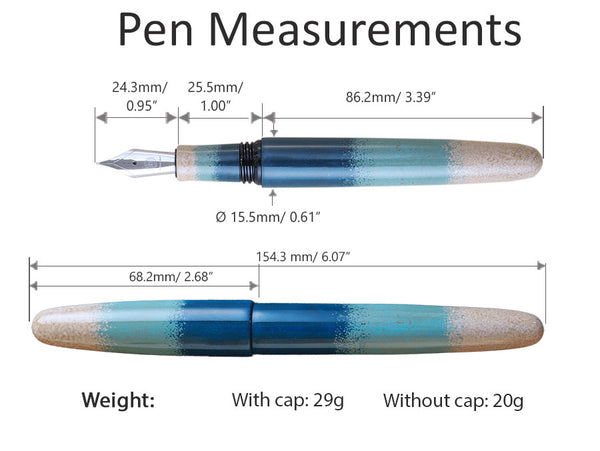
Packaging
Traditional Japanese Wooden Box + Cartridge & Converter + Instructional Materials








